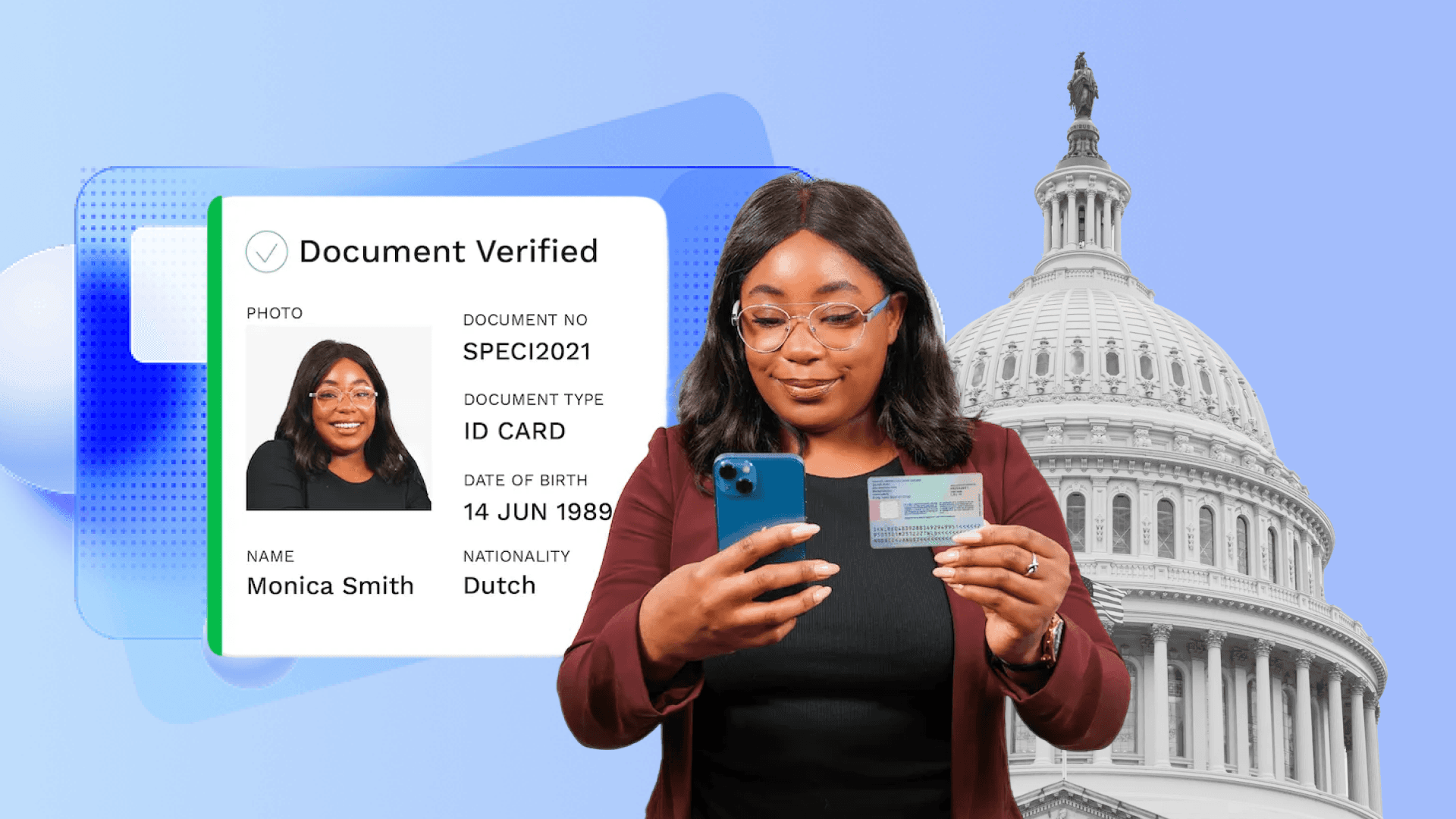Table of Contents
How to Build a Ride-booking App — A Complete Guide
Author

Subject Matter Expert


Date

Book a call
A comprehensive guide on building a taxi or ride-booking app, this article takes a look at every factor involved from a business perspective. Find out what a taxi or ride-booking app is, its popularity over recent years, and market trends. Delve into a step-by-step process for building the app, including conducting market research, designing the app's UI/UX, selecting features, choosing an app development approach, building an MVP, and launching the app. We also look into the cost factors involved in building such apps. For a detailed technical idea on creating customizable ride-booking or taxi-booking applications, you can check out this article.
What is a Ride-booking App?
Thanks to ride-booking or taxi-booking apps, gone are the days of worrying about expensive transport, parking woes, wasting time waiting for cabs, and energy overconsumption. A few taps on your smartphone will secure you a vehicle at your doorstep right on time. Ride-booking apps connect registered passengers to nearby registered vehicles via interfaces such as smartphones and an internet connection.
These applications are popular primarily because they are:
- Convenient
- Pocket-friendly
- Help the environment
Some famous ride-booking apps include Uber, LYFT, OLA Cabs, and Rapido.
Three applications are developed for a ride-booking app, and they work together to bring passengers a seamless commuting experience. These include the admin app, the passenger app and the driver app. Let us understand how we can build a functional ride or taxi e-booking app for your business.
Ride-booking App Market Trends
A report by Statista says that the Ride-hailing & Taxi industry is going to make a whopping US$330.80 billion in revenue by 2023, with an expected 1.45 billion users by 2027.
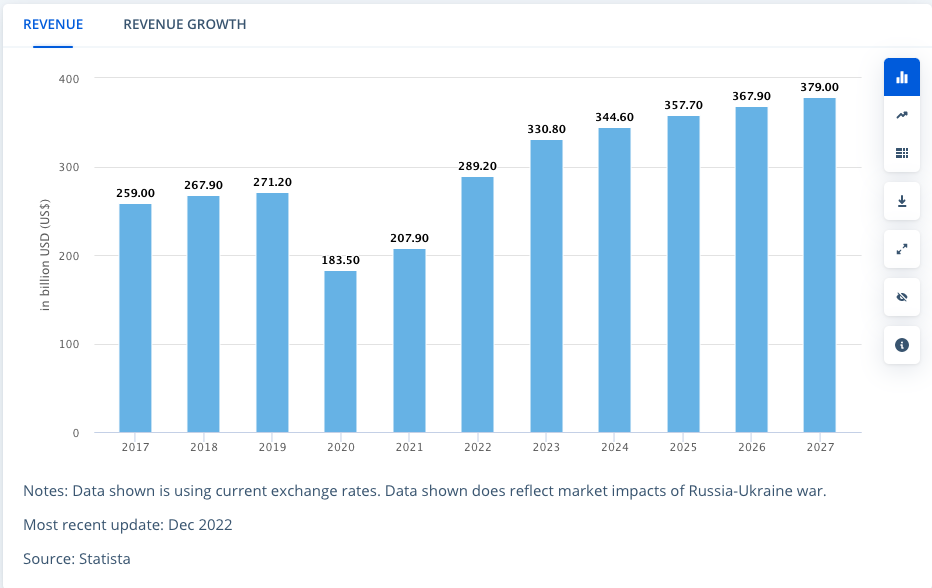
According to a Fortune Business Insights article, the ride-booking market will be dominated by North America, with the Asia Pacific region estimated to experience the fastest market growth due to population expansion. The European market will continue to grow at a steady pace. Considering these numbers, now is as good a time as any to start working on developing your own ride-booking app.

Some of the market leaders in the business include:
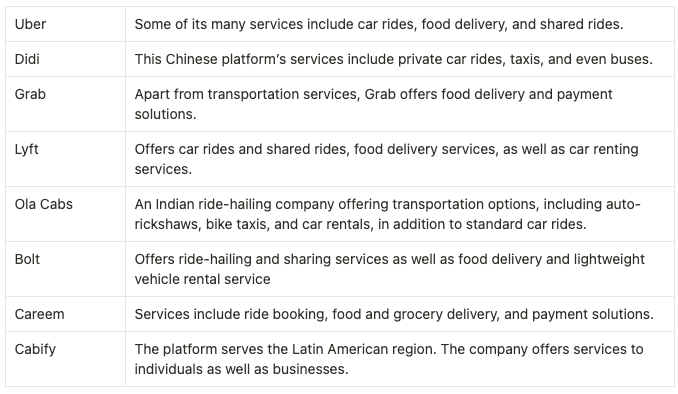
Considering the stiff competition, ensuring that your ride-booking app has all the necessary features, functionalities, and more to make it wow users and stand out from the crowd is crucial.
How to Build a Ride-sharing App — A Step-by-step Guide
Step 1: Conduct Market Research and Find Your Target Audience
So you want to create a ride-booking app. What new, unique problems are you looking to solve? Who is your target audience? With ride-booking apps offering a range of related services these days, it is essential to set clear goals for your app. Do not forget factors such as geographical location and demographics.
Think of some unique features you can add to give your app that much-required edge. Doing extensive research on competitors to figure out gaps between existing apps and user requirements can definitely help here.
Step 2: Design the UI/UX of Your Taxi or Ride-booking App
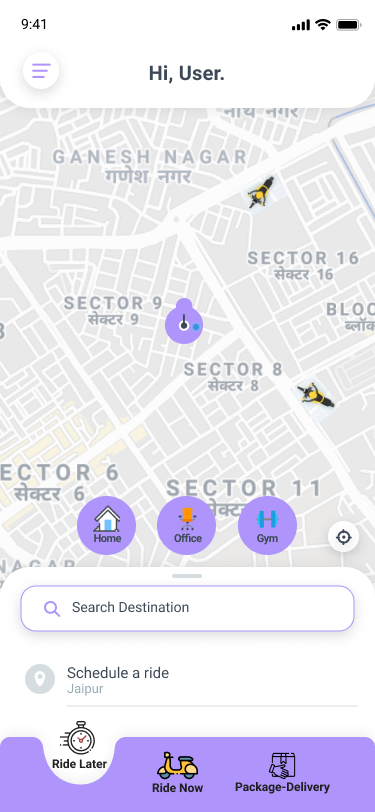
Create a smooth and intuitive workflow for your app by bringing your user interface and user experience vision to life. Create the wireframes and design prototypes, keeping simplicity, functionality, and ease of use in mind. Keep implementing the user feedback from the prototypes into your application.
Step 3: Figure Out the Features You Want in Your Application
The core features you select for your app will depend on your market research and target audience, and these features will determine the tech stacks required. There are three apps involved, the user or rider or passenger app, the driver app and the admin app. The essential features of these apps are discussed later in this article.
Step 4: Select an app development approach
Depending on your app requirements, scalability, and the expertise of the development team involved, you can select any one of the following development approaches:
- Native
- Hybrid
- Cross-platform
Remember that the app's success depends a great deal on the development approach you choose.
The following table breaks down the essential features of each approach:
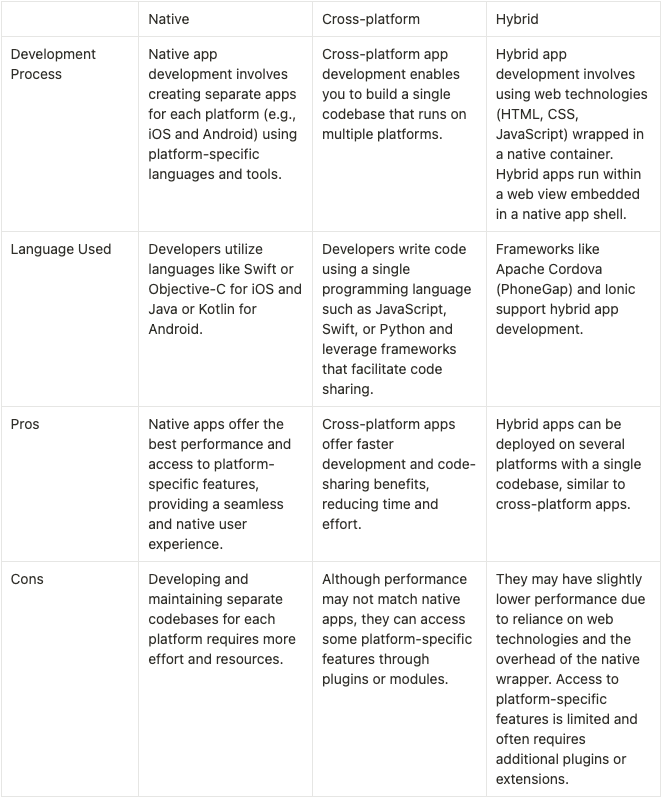
Step 5: Build an MVP (Minimum Viable Product) for your ride-booking app
The best way to test if your app has any holes is to build its MVP before going all in and building the actual app. Check out how they help:
- You can use the MVP to test and make sure that your app will not fail once launched.
- You can attract potential customers and investors without spending a lot of money.
- You can incorporate the feedback you receive from the initial users to create a better version of the app.
Step 6: Get Your MVP Tested by Professionals and Launch Your App
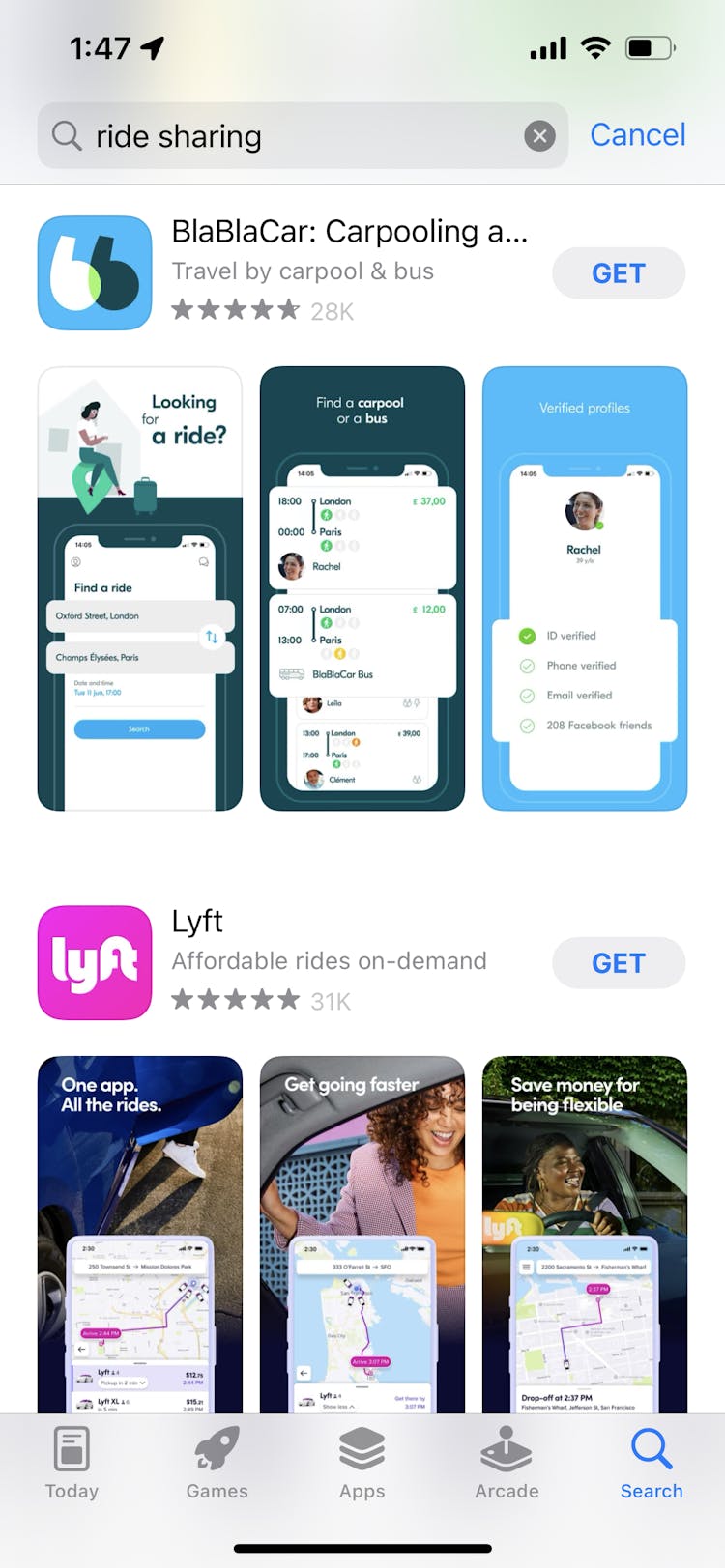
Ensure that your MVP is tested by quality assurance (QA) professionals. The QA team will ensure an error and bug-free MVP, ready to test with target users. Keep utilizing the feedback you receive from the MVP users to build a successful final product.
Finally, you can develop a fully functional app from your MVP by adding all the features, functionalities and feedback gathered. Push the final product to the app stores for review and launch.
Must-have Features to Include in Your Taxi-booking App
Selecting the correct and essential features for your ride or taxi-booking app is essential to stay ahead in a competitive market. A ride-booking app has three parts:
- The admin app
- The user or rider app
- The driver app
The common features list for ride-booking apps can be broken down further for these apps as shown in the table below:
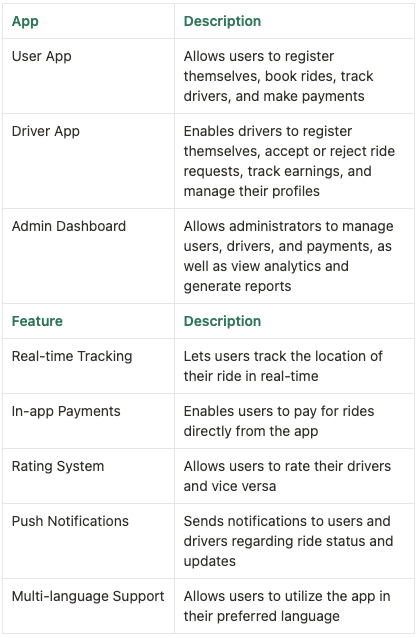
Essential Features for Riders/Passengers
The following are some essential features for riders:
- Easy user registration: The user account and profile creation process should be simple and hassle-free, with Google or Facebook sign-in or sign-in using a mobile number. Good UI/UX is essential to attract and retain users here.
- Easy ride-booking: Once the rider provides the pick-up and drop-off locations, the app should show a route map, an ETA (Estimated Time of Arrival) and a cost estimation for the ride before booking.
- GPS and live tracking: Riders should be able to conveniently track the progress of the booked vehicle in real-time from the app.
- Push notifications: Push notifications in the app help quickly update the users on active ride status, payment details, offers, and discounts.
- Easy ride cancellation: Easy ride cancellations encourage user retention by offering users the option to cancel easily if the ride was requested by accident or if it is no longer required.
- Chat/messaging facilities: This is another essential feature to have as it allows riders to freely communicate with the driver via call or text messaging whenever necessary, in real-time.
- Review and rating system: The riders should be able to update and share driver and trip reviews, ratings and feedback.
- Payment options: The app should be integrated with different payment gateways that enable secure money transfers for the ride-booking service and related payments, improving customer experience.
- User ride history: The rider’s profile should have the details of all their previous rides listed for easy reference and use as and when required.
Essential Features for Drivers
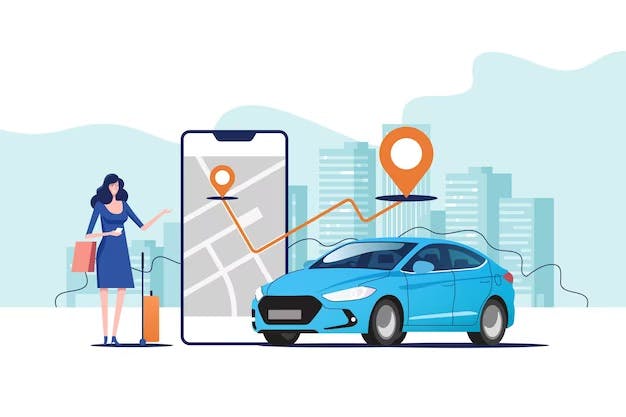
The following are some essential features for drivers:
- Easy login and registration: Just as for the user, the account and profile creation process should be simple for the drivers. Some essential requirements could be the driver’s name, driving license, and vehicle registration number.
- Real-time navigation and updates: This helps drivers quickly check the shortest routes available for any trip.
- Easy trip cancellation: Drivers should also have the option to easily accept or reject a ride depending on convenience, without being penalised for cancellations.
- Integrated payment options: Multiple payment options eliminate the chances of payment failures and make it easy to accept or receive money for drivers.
- Driver dashboard: Helps drivers to keep a tab on their profile, ride history, earnings, and other important information.
- Rating system: Drivers should be able to leave reviews and feedback regarding rides or users with ease.
- Easy communication with passenger: Calling and chat or messaging option help drivers to connect with riders regarding location or other relevant information.
- Push notifications: Push notifications help keep drivers get updates on passenger location, offers, and other useful details.
A Breakdown of the Cost of Building an On-demand Ride-booking App
The cost of building a ride-booking app depends heavily on a number of factors, including:
- App complexity: This refers to how simple or complex your app is. A feature-rich app with several functionalities will cost more than a simple app with minimum features.
- The choice of tech stacks: The choice of tech stacks varies for native, cross-platform, and hybrid apps, and so does the cost.
- The location of the development team: Building an app in-house in the USA or UK may be more expensive than outsourcing the app development project to an experienced development team in Southeastern Asia.
- Post-launch support: Keep in mind that most ride-booking apps require maintenance and support post launch.
This table breaks down the approximate costs involved:
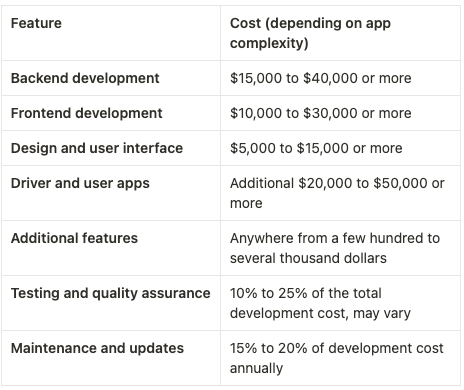
Top 5 Ride-Booking Apps
1. Uber
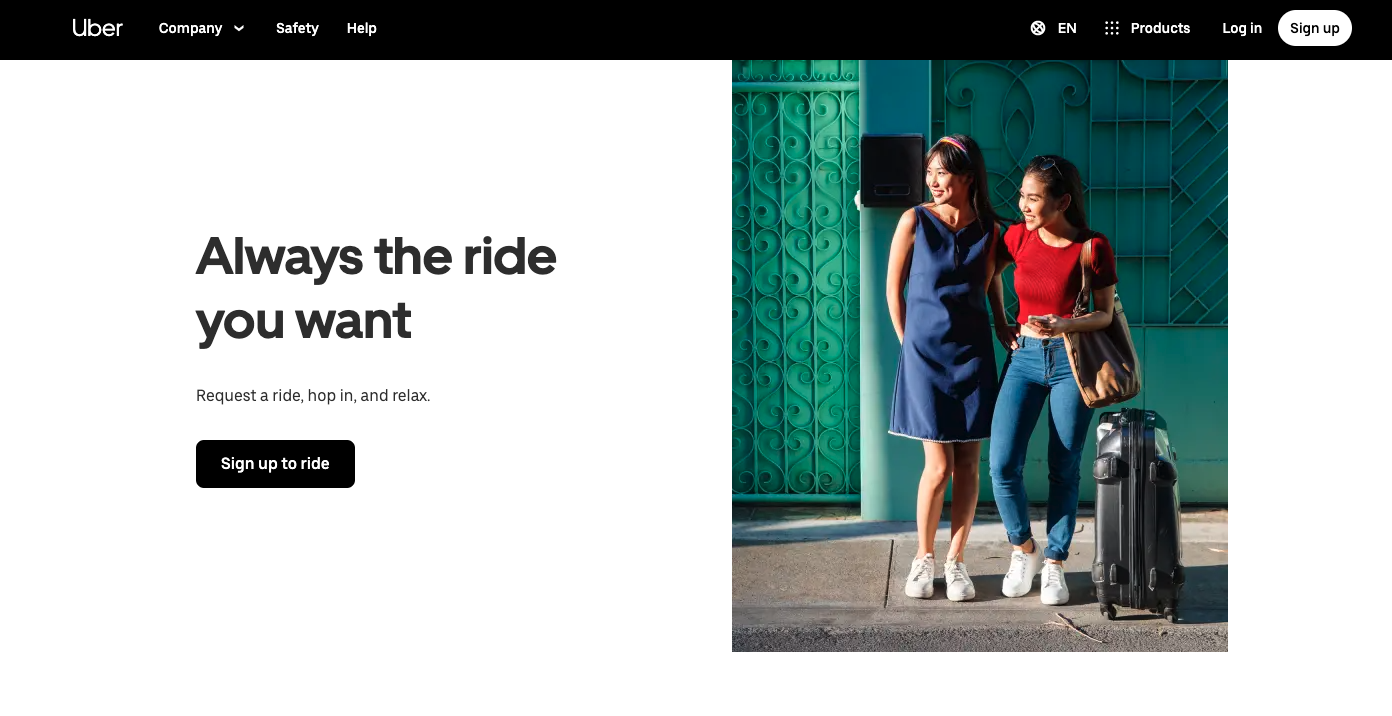
Founded by Garrett Camp and Travis Kalanick in 2009, Uber is ride-hailing, delivery, and courier service based in San Francisco. Uber service is currently available on iOS and Android. Currently operating across Europe, Asia, and South America, Uber generated $31 billion revenue in 2022, an 82% increase on previous year.
2. Ola Cabs
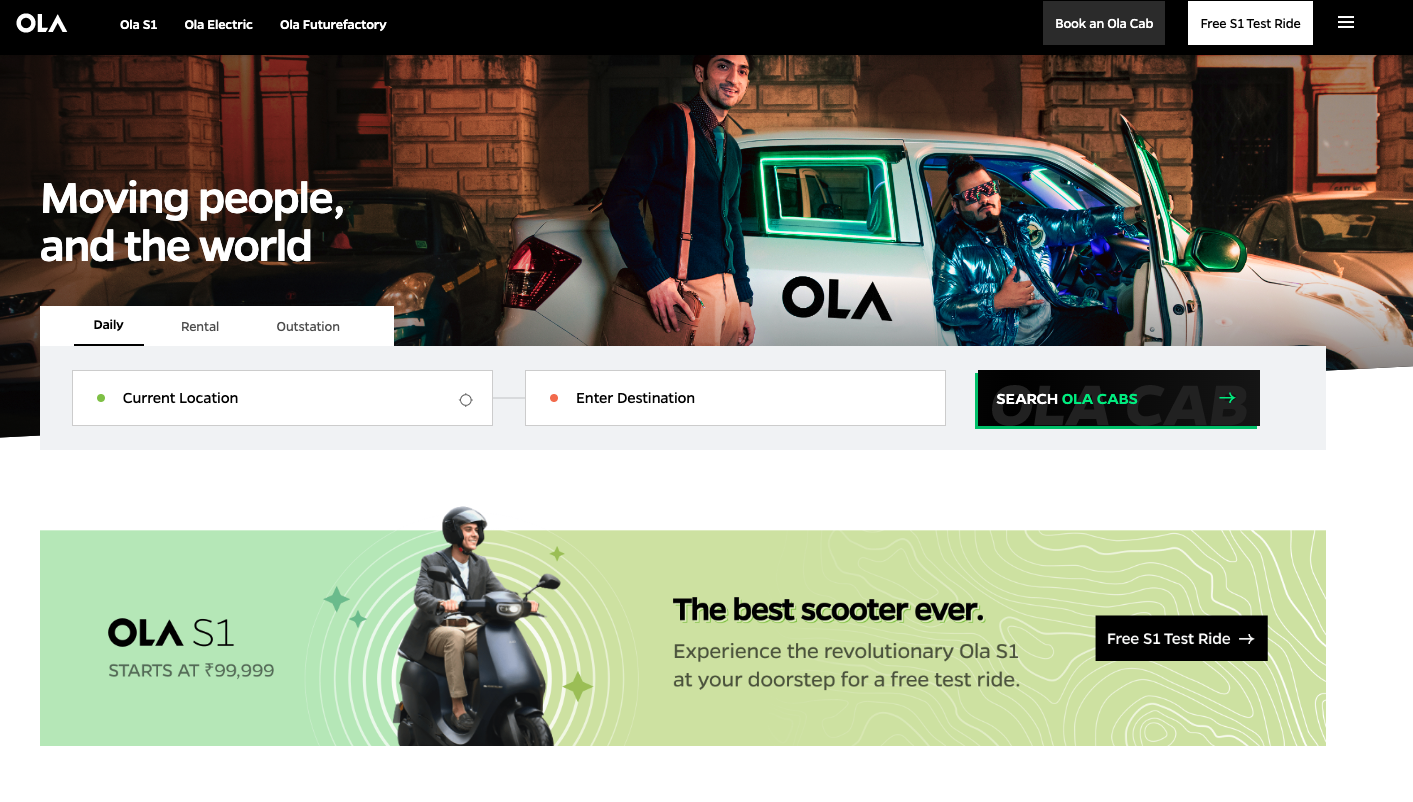
An Indian ride sharing service company founded in Bangalore, Ola cabs offers ride-hailing, financial, and cloud kitchen services. Currently, they operate across India, Australia, New Zealand, and and the UK. The company saw a 30% rise in revenue from 2021 to $47 million in 2022.
3. Lyft
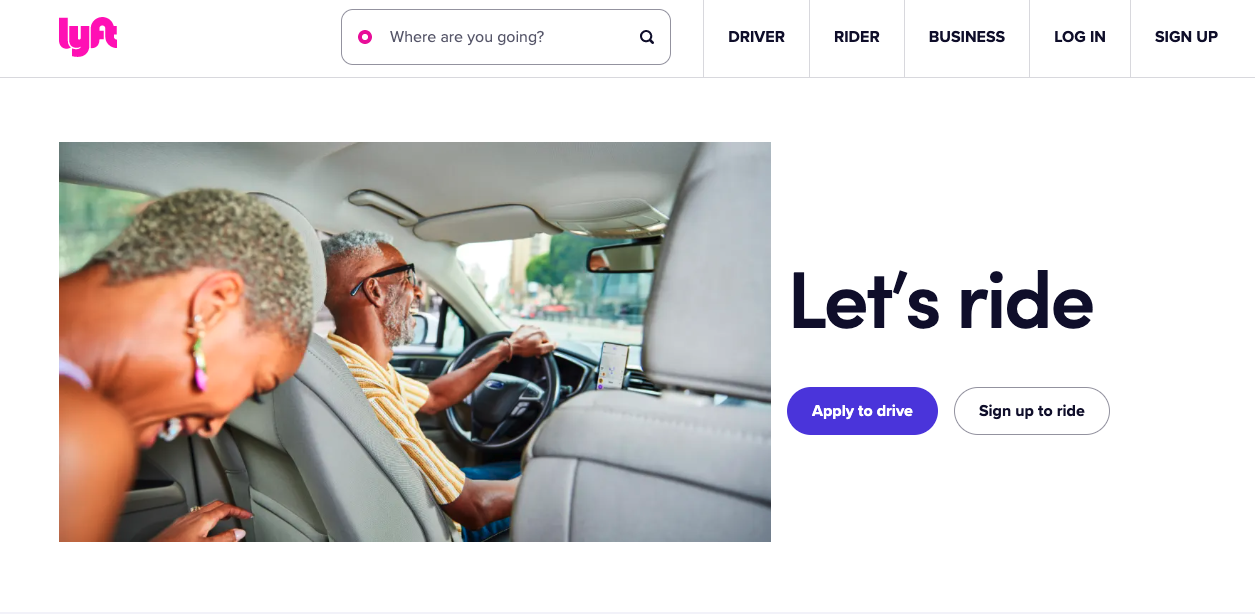
A San Francisco-based ride-sharing company, Lyft started in 2012. The company operates across the USA and Canada, and can be accessed on both Play Store and the App Store. In 2022, Lyft recorded a 28% year-on-year revenue growth of $4.1 billion from 2021.
4. DiDi
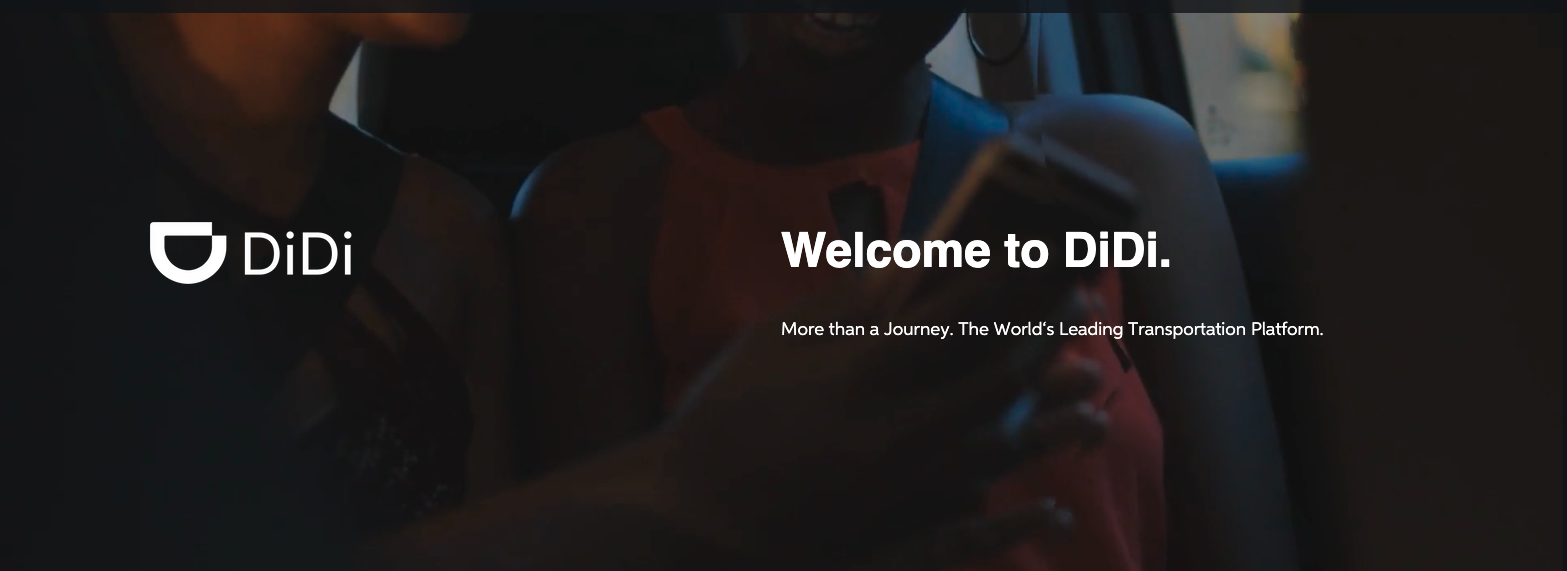
Founded in Beijing in 2012, DiDi is a ride-hailing service company, available to users via iOS and Android. As a market giant, the company operates globally, including locations in South America, Japan, Australia, Russia, and South America.
5. Rapido

Founded in 2015, Rapido is an Indian bike taxi and cab hailing service provider. In 2022, the company had reached a valuation of $830 million.
Ridde with GeekyAnts — Fully Customizable Taxi Booking App
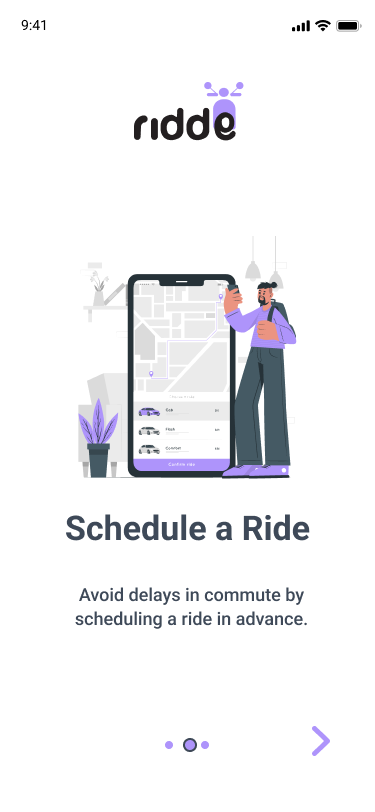
Revolutionize the ride or taxi-booking experience for your users with Ridde, a customizable bike taxi booking app. Check out what makes it so awesome:
- Don’t build from scratch: Save precious development cost and time by building your app on top of Ridde.
- 100% themeable: Ridde offers a rich collection of stunning UI elements.
- Host of features: Ridde comes with all essential features, including user registration via phone OTP, Google login, etc., chat messaging, ride now and ride later option, push notifications, real-time tracking, payment gateway integrations, package delivery,
- Build apps similar to: Uber, Lyft, Rapido, Ola Cabs.
- A look at the tech stacks: Ridde uses latest tech stacks including Flutter SDK, PostgreSQL, and Firebase Admin SDK.
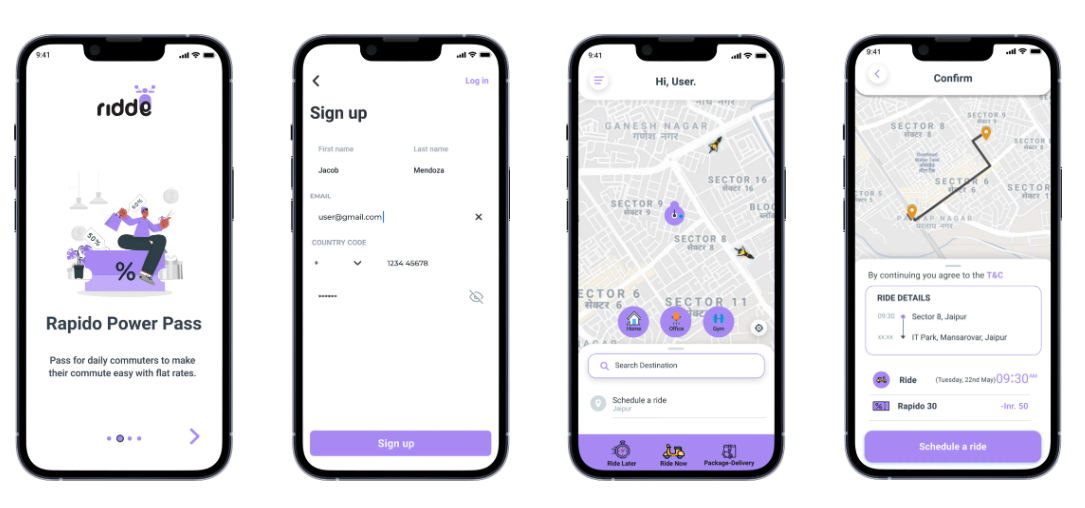
Build your dream ride-booking app 2X faster, at half the price with Ridde at GeekyAnts app design and development studio.
Frequently Asked Questions
1. What is the estimated time required to build a ride-booking app?
A: The time it takes to develop a ride-booking app depends on several factors, including app complexity, features, location and expertise of the development team, and the tech stacks used. Generally, it takes about a few weeks to a few months to build a ride-booking app.
2. What Technology Stacks to use While Building a ride-booking app?
A: The selection of tech stacks while building a ride sharing app depends on factors such as app features and functionalities, your budget, the skill and expertise of your development team, and specific app requirements. The tech stacks that are used include programming languages, back and front-end frameworks, database, cloud services and hosting, and payment integration, among others.
3. How do ride-booking apps work?
A: In ride-booking apps, three apps, the user app, the admin app, and the driver app, function together to offer a seamless ride booking experience to the users. These apps connect users and drivers via interfaces such as smartphones over the internet.
4. How can my ride-booking app make money?
A: Depending on the local regulations, there are several monetization strategies that ensure your ride-booking app makes money. Some common strategies include commission fees, surge pricing, advertising, subscription or membership plan, partnerships and referral programs, as well as data monetization.
5. What are the benefits of building a ride-booking app?
A: The benefits of building a ride-booking app are manyfold. For passengers, the benefits include easy and convenient transportation, pricing transparency and multiple ride options, safety and security, and easy payments. For drivers, the benefits include flexible income opportunities, better customer reach, efficient navigation, and accountability via reviews and feedback.
Dive deep into our research and insights. In our articles and blogs, we explore topics on design, how it relates to development, and impact of various trends to businesses.




